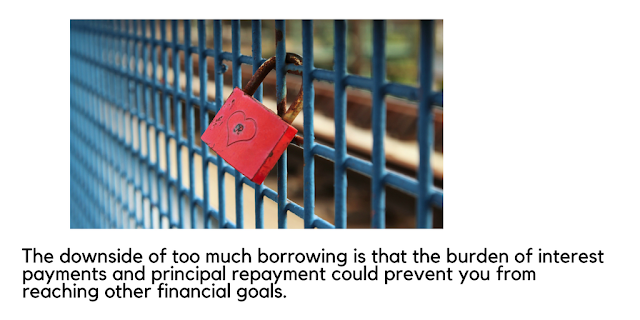Interest Rates Are Going Up. Here’s What You Should Do To Prepare
Federal Reserve hiked interest rates again at its recent
meeting in March, and the minutes from that meeting released hinted
at even more interest rate increases to come this year. Many of us tend to
dismiss these Fed actions as something that doesn’t affect our daily lives.
But, the truth is that Fed’s interest rate actions directly or indirectly
affect rates on credit cards, auto loans, home equity lines of credit, and potentially
even mortgages. So, now would be a good time for you to identify your
liabilities and find strategies to reduce or eliminate the liabilities in the
context of overall financial planning goals.
Let’s start with the caveat that debt is not inherently good
or bad. It allows you to buy assets that you couldn’t otherwise buy for some
time, e.g., a house.

Following are some strategies for you to create a debt management plan. This plan is meant to determine which debts should be paid off first and how:

Following are some strategies for you to create a debt management plan. This plan is meant to determine which debts should be paid off first and how:
1.
Take an inventory of all your debt – Mortgage,
home equity loan, auto loan, student loan, credit card debt, and all other
types of personal loans and liabilities.
2. Generally, the goal of your debt management plan should be to minimize borrowing costs and maximize the potential to reach your financial goals.
3. Start with the debt that is not tax-deductible, e.g., your car loan, credit card debt, etc.
4. Make a list of your liabilities in the descending order of interest rates, i.e., list the highest rate interest debt first.
5. Find out the costs (e.g., transfer fees) to transfer credit card balances to lower interest cards.
2. Generally, the goal of your debt management plan should be to minimize borrowing costs and maximize the potential to reach your financial goals.
3. Start with the debt that is not tax-deductible, e.g., your car loan, credit card debt, etc.
4. Make a list of your liabilities in the descending order of interest rates, i.e., list the highest rate interest debt first.
5. Find out the costs (e.g., transfer fees) to transfer credit card balances to lower interest cards.

7.
Determine if you can afford to pay off any
balances. This will require a review of your cash flows, balance sheet, any
upcoming requirements, etc. And don’t forget to keep six months of expenses in
emergency funds.
8.
Pay off the high interest loans first, including
the balances on your credit card balances starting with the highest interest
credit card.
9.
Now go down the list and try to pay off as much
of your other loans as possible, again starting with the higher interest rate
loans. The caveat here is that those heavily in debt should carefully consider
if any loan is secured by an asset that they can’t afford to lose (e.g., the
house they live in).
10.
On the other hand, wealthy families should
consider the trade-off between paying debt compared to potential investment
returns. One important consideration here would be to make sure that you
consider the riskiness of investments before making this trade-off. It won’t be
good to make speculative investment bets that don’t pay off while your debt is
still outstanding.
As with all financial advice, you should consider above
strategies a useful checklist; however, consider how these might fit your
personal situation before taking action. A discussion with your financial
planner might also be useful here.




Comments
Post a Comment